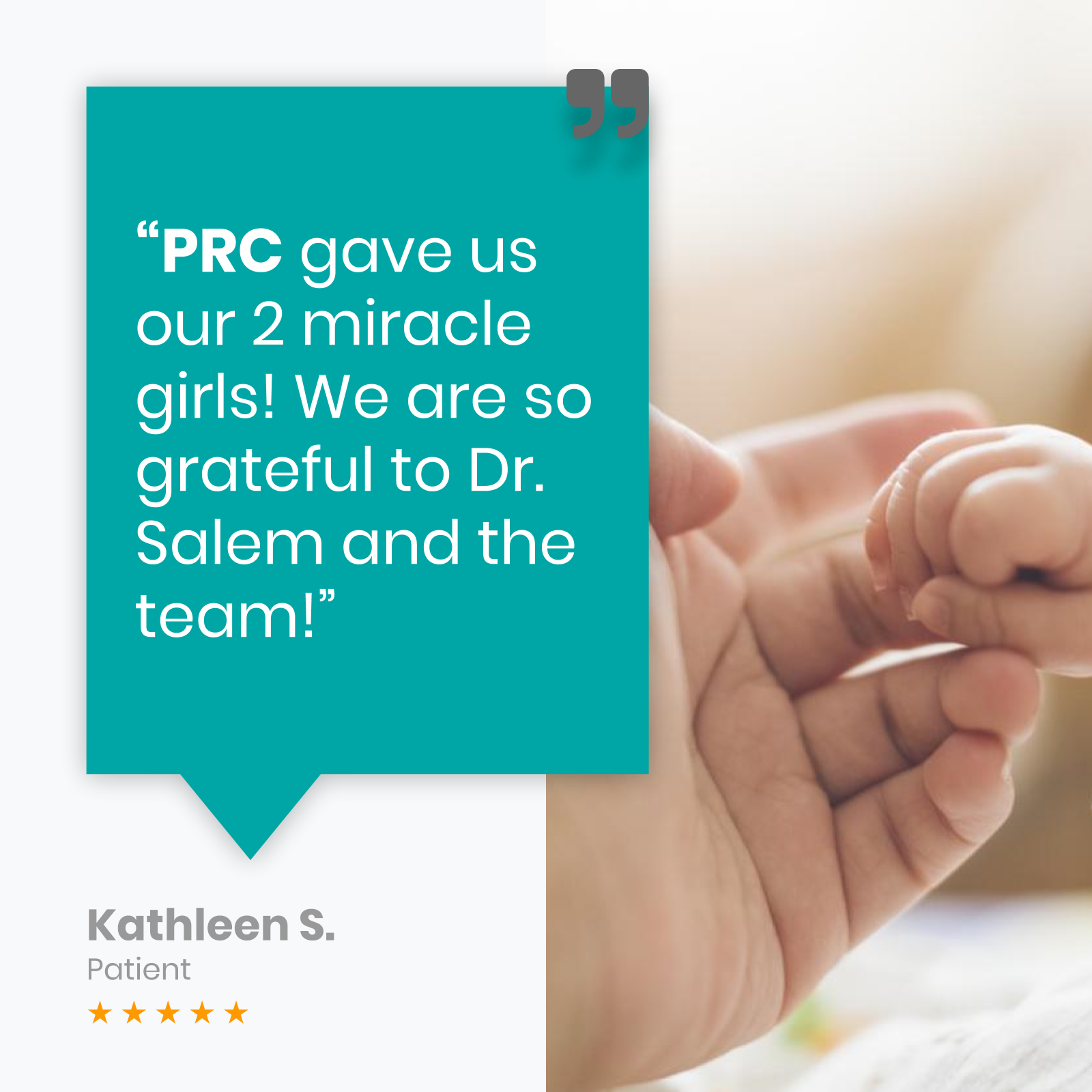Laparoscopy
Laparoscopy in Southern California
Laparoscopy for infertility is a highly effective approach that corrects reproductive irregularities with minimal downtime or complications. Here’s what you need to know about laparoscopy surgery and laparoscopic surgery recovery.
No one attempting to have a baby wants to receive a diagnosis of infertility. However, when the cause is unclear, it can make the assessment even more disheartening. While unexplained reproductive irregularities are often the source of great concern among patients who wish to conceive, many of these issues can be identified and corrected using a minimally invasive surgical procedure known as laparoscopy surgery.
At PRS, our team of board-certified reproductive health specialists performs laparoscopy for infertility, helping patients optimize their reproductive health safely and without significant recovery time.
How a Laparoscopy Procedure Works
Laparoscopy for infertility is an outpatient procedure that allows a physician to visualize anomalies that can hinder a successful pregnancy.
A laparoscopy surgery is a medical procedure used to view a woman’s reproductive organs. A laparoscope, a thin surgical tool, is passed through a small incision in the abdomen, typically in the navel.
This minimally invasive procedure is done under general or local anesthesia. A laparoscope is a small, thin fiber-optic tube equipped with a light and camera that is inserted into two or more small incisions. The camera captures the internal reproductive anatomy, allowing the doctor to examine the region for fibroids, polyps, growths, adhesions, scar tissue, and cysts. If necessary, small samples of tissue are taken for testing at our fertility clinic in California.
The doctor can look directly at the entire reproductive apparatus using laparoscopy. Uterus irregularities and obstructions within the ovaries, fallopian tubes, and nearby organs can all be identified with a laparoscope.
During the procedure, which lasts between 30 and 45 minutes, the abdomen will be inflated with gas to gently push the organs away from the abdominal wall so they may be observed.
After inflating, the doctor will insert the laparoscope into the incisions and be able to view the interior of the pelvic cavity via a video screen transmitting the images from the camera.
Laparoscopy diagnosis and treatment can often be performed during the same procedure. If the doctor concludes that any problems detected can be corrected, they may then use small surgical instruments through the laparoscope to remove scar tissue, fibroids, or endometrial tissue that is incorrectly implanted outside the uterus. These can be removed by cutting the tissue or through a laser beam or electric current.
Finally, the surgeon will close the incision in your abdomen with stitches. Typically, there is little to no scarring involved in a laparoscopy fertility procedure.
Benefits of Laparoscopy for Infertility
The primary benefits of laparoscopy surgery include a low complication rate, less scarring than open surgery, and minimal recovery time.
For many reproductive anomalies requiring correction, the preferred intervention is laparoscopy. Fertility complications can be both identified and addressed during the same procedure.
Because this type of intervention is considerably less invasive than previous surgical techniques, it generally results in significantly shorter recovery times and overwhelmingly favorable outcomes.
Laparoscopy for infertility offers the dual benefits of being an effective diagnostic tool and surgical technique. By detecting and correcting the fundamental cause of infertility, the patient improves her odds of achieving pregnancy in a shorter time than what can be achieved with traditional open surgery.
Highly delicate and precise procedures can be performed through extremely small incisions that don’t result in permanent scarring.
Laparoscopy procedures offer the following advantages:
- Minimal pain.
- Lower infection rates.
- Undetectable incisions and scars.
- Faster and easier return to regular activities.
A female pelvic laparoscopy is often recommended when other diagnostic tests, like an X-ray or an ultrasound, cannot confirm the cause of a condition.
Laparoscopic intervention can detect abnormalities so small that they don’t generate symptoms and can be missed during other diagnostic evaluations, including hysterosalpingography.
Conditions Addressed by Laparoscopy Surgery
This procedure can be used to:
- Find the cause of pain in the pelvic and abdominal regions.
- Detect and treat suspicious cysts, growths, and abnormal tissue.
- Confirm endometriosis or pelvic inflammatory disease.
- Look for blockage of the fallopian tubes or other causes of infertility.
Though surgical treatments are often recommended for patients experiencing symptoms of medical abnormalities, laparoscopic procedures have been credited with delivering impressive outcomes for patients whose fertility doesn’t have an immediately obvious cause.
Patients experiencing unexplained infertility and who have not achieved success after undergoing preliminary treatments like ovulation induction or intrauterine insemination (IUI) might benefit from diagnostic laparoscopy.
Laparoscopy Recovery
Laparoscopy recovery time might differ from patient to patient, but most can expect to resume normal activities within a few days.
After laparoscopy for infertility, patients typically experience the following:
- Tenderness or soreness at the incision site.
- A bloating sensation due to the gas used to inflate the abdominal cavity.
- Abdominal cramping and constipation.
- Vaginal bleeding and discharge.
After laparoscopy surgery, your doctor will discuss pregnancy options with you. If the fallopian tubes are repaired, or fibroids are removed, pregnancy may be likely without assisted reproductive technology.
Laparoscopic surgery recovery times might vary – some patients require several months of healing before attempting further fertility treatments and conception. However, the majority of patients can resume normal activities within a week of the laparoscopy procedure.
Fertility treatments are recommended when pregnancy doesn’t occur within 6-9 months after surgery.
At PRC, we are proud to offer the latest innovative fertility treatments, giving patients access to state-of-the-art therapies while integrating effective full-body wellness strategies.
Call us at 424-340-0871 to discuss whether a laparoscopy fertility procedure is right for you.
Treatments
Pacific Reproductive Center has been successfully aiding conception for over two decades. We optimize the conditions of fertility treatment to give every potential parent the greatest chance of successful childbirth.
Resources
We ensure that every patient fully understands their medical condition and treatment options available to them. We understand each patient is unique so we help guide you through the best option to support your own fertility journey.
Looking for the Best Fertility Clinic in Southern California?
Pacific Reproductive Center has four convenient locations throughout Southern California, making it easy for patients to receive quality care close to home. Each IVF fertility center has an on-site lab, next-generation services, and state-of-the-art equipment.
Whether in Glendale, Torrance, Irvine, or Corona, our world-class fertility doctors can help you build the family you’ve always wanted.
3720 Lomita Blvd, Suite 200 Torrance, CA 90505
116 E. Broadway, Suite 300 Glendale, CA 91205
10 Post Irvine, CA 92618
381 Corporate Terrace Corona, CA 92879




